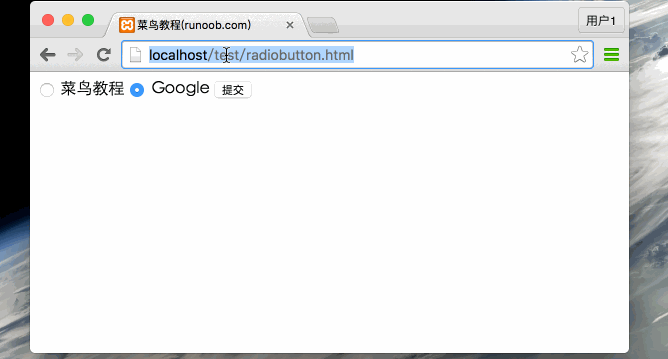
With more people shopping online, security measures for e commerce are becoming more important. These security measures are focused on the transaction portion of the website, trust between clients, outflow website, as well as vulnerabilities in defense. Although perimeter defenses have proven effective in protecting against online attackers, they are not sufficient to stop all attacks. By focusing on finding the weakest points in a defense, ecommerce security measures are becoming more effective and popular.
Multi-factor authentication
Multi-factor authentication (MFA) is a vital part of online security, as it helps reduce the risk of fraudulent purchases and administrative data breaches. However, only 44% of businesses use this technique, according to a recent Experian report. Modern MFA solutions offer convenience and security. Check out the NIST Cybersecurity Practice Guide for more information about multi-factor authentication.
Multi-factor Authentication (MFA) temporarily locks an account when suspicious activity is detected. This can be used to protect sensitive information and deter unwelcome visitors. This allows for greater control of the authentication process.

Address verification system
An Address Verification Service (AVS) is one of the most popular security measures in e-commerce. This service compares the billing address of the purchaser with the bank's file. This allows merchants stop fraudulent transactions from taking place.
During the comparison step, the issuer verifies that the address' numeric portion includes the ZIP/postal codes and the residence number. This process is more difficult with apartment and suite addresses, which are not always easy to match. If the street name is included in the address, the verification system might still approve the transaction.
Encryption
Your customer's private information can be protected from unauthorized access by using encryption. This is crucial for any type or internet transaction, no matter if you're selling a product of a service. Any security breach could undermine your customers' trust in your ebusiness.
Ecommerce websites can have security issues that are not only common but also highly technical. There are qualified security experts who can assist you. Cyber-attacks can be costly. Ensure that your customers are safe.

Content delivery network
Content delivery networks (CDNs) are large systems of servers that deliver online content based on the location of the user. Instead of hosting, which sends content from a single server, content delivered by a CDN can be distributed to multiple servers to reduce download times. Content delivered through a CDN is usually highly secure. For example, if a web site contains private information, the CDN must ensure that it cannot access it without the user's consent.
CDNs help companies to secure their information through filtering malicious content. Many CDN service providers also offer website security services that can prevent data breaches from happening. Regardless of the type of CDN that your business uses, it's essential that you determine how much protection you need for your business-critical content.
FAQ
What is the cost of creating an ecommerce website?
It depends on which platform you choose, and whether the freelancer is employed directly or through a service provider. eCommerce sites usually start around $1,000.
You can expect to pay between $5000 and $10,000 for a platform once you have decided.
Templates are usually not more expensive than $5,000, unless you have a specific purpose. This includes any customizations required to reflect your brand.
Web development is hard?
Web Development can be challenging, but there are many resources online to help you learn.
All you have to do is find the right tools and then follow them step-by-step.
There are many tutorials available on YouTube and other platforms. You can also access free online software like Sublime Text, Notepad++, and others.
Many books are also available in libraries or bookstores. These are some of the most well-known:
O'Reilly Media presents "Head first HTML & CSS".
"Head First PHP & MySQL 5th Edition" by O'Reilly Media
Packt Publishing, "PHP Programming For Absolute Beginners",
I hope this article was helpful.
Which platform is best for designing a website?
WordPress is the best platform when it comes to designing websites. It offers all the features that you need to build a professional-looking website.
Themes are easy to install and customize. You have thousands of options for free themes.
You can also add functionality by installing plugins that allow you to do everything from adding social media buttons to adding forms and contact pages.
WordPress is very user-friendly as well. To modify your theme files, you don't need to be able to code HTML. Click on an icon to select the theme you wish to change.
While there are many options for platforms, WordPress is my favourite. It has been around forever and is still widely used by millions.
Can I create my own website with HTML & CSS?
Yes, you can! It is possible with basic knowledge of web design, programming languages like HTML (Hyper Text Markup Language), CSS (Cascading style Sheets), and HTML (Hyper Text Markup Language). These two languages allow you to create websites that can then be viewed by anyone who has access to your internet connection.
What is a responsive website design?
Responsive web design (RWD), is a way to create websites that display responsively on all devices, including smartphones, tablets, desktop computers, laptops and tablets. This allows visitors to view the website on one device and access other features like buttons, navigation menus, etc. RWD is designed to ensure that a user can view a site on any size screen.
If you are building a website to sell products primarily via eCommerce, then you want to make sure that customers can purchase items from your store even if they view it on their smartphones.
A responsive site will automatically adjust its layout based on the device being used to view it. It will appear the same as a regular desktop website if you view it on your laptop. It will look different if you view the page from your phone.
This allows you to create one website that works on all devices.
Can I use HTML & CCS to build my website?
Yes! If you've followed the steps, you should now be able create your website.
You're now familiar with the basics of creating a website structure. However, you must also learn HTML and CSS Coding.
HTML stands to represent HyperText Markup Language. It is similar to writing a recipe. It would include ingredients, instructions, as well as directions. HTML can also be used to inform a computer if certain parts of text should appear bold, underlined and italicized. It's the language of documents.
CSS stands for Cascading Style sheets. This is a stylesheet for recipes. Instead of listing each ingredient and instructing, you can write down general guidelines for font sizes, colors and spacing.
HTML tells the browser what HTML is and CSS tells it how.
Don't panic if either of these terms are confusing to you. Follow these tutorials, and you'll soon have beautiful websites.
What is website design software?
Software for designing websites is used by photographers, illustrators and writers.
There are two main types: cloud-based or desktop software. Desktop apps can only be installed locally on your PC and will require additional software to run on your system. Cloud-based software is hosted remotely over the internet. It does not require you to install additional software, which makes them great for mobile users.
Desktop Applications
While desktop applications have more features than cloud-based options, they're not always needed. Some people prefer to work only from a desktop application because it is more convenient. Others like to use the same tool regardless of whether they are working on a laptop or a smartphone.
Cloud-Based Solutions
Web designers who wish to save time or money should consider a cloud-based option. These services let you edit any type or document anywhere you have an internet connection. You can use your tablet to work while you wait for your coffee brew.
A license is required if you opt for a cloud-based service. You won't need to purchase additional licenses if you upgrade to a later version.
These programs can be used in Photoshop, InDesign, Illustrator or any other Adobe product to create web pages.
Statistics
- It enables you to sell your music directly on your website and keep 100% of the profits. (wix.com)
- The average website user will read about 20% of the text on any given page, so it's crucial to entice them with an appropriate vibe. (websitebuilderexpert.com)
- It's estimated that chatbots could reduce this by 30%. Gone are the days when chatbots were mere gimmicks – now, they're becoming ever more essential to customer-facing services. (websitebuilderexpert.com)
- Is your web design optimized for mobile? Over 50% of internet users browse websites using a mobile device. (wix.com)
- Did you know videos can boost organic search traffic to your website by 157%? (wix.com)
External Links
How To
What is website hosting?
Website hosting describes where visitors go when they visit a site. There are two types:
-
The cheapest option is shared hosting. Your website files are stored on a server that is owned by another person. Customers visiting your website send their queries over the Internet, to that server. You then receive the request from the owner of the server.
-
Dedicated hosting: This is the most costly option. Your website will reside on a single server. You and your traffic are protected by the fact that no other websites share server space.
Shared hosting is preferred by most businesses because it's cheaper than dedicated hosting. The company hosting the server will provide the resources necessary to manage your website.
There are pros and disadvantages to each option. Here are the differences:
The pros of shared hosting:
-
Lower Cost
-
Easy to Set Up
-
Regular Updates
-
It can be found on many web hosting companies
You can get shared hosting for as low as $10 per monthly. But keep in mind that this price usually includes bandwidth. Bandwidth refers the data that you can transfer over the Internet. Even if only you upload photos to your blog or website, high-volume data transfers may incur additional charges.
Once you begin, you will soon see why you spent so much on your previous host. Most shared hosts provide very limited customer support. While they may occasionally assist you in setting up your site and other tasks, after that you are all on your own.
Providers that offer 24-hour customer support are worth looking into. They will take care of any issues while you sleep.
Cons of dedicated hosting
-
More Expensive
-
Less is More
-
You will need to have special skills
With dedicated hosting, all you need to maintain your website are provided. You won't worry about how much bandwidth you are using or how much RAM (random Access Memory) you have.
This means that you will have to pay a little more upfront. However, once your business goes online, you'll discover that you don’t need as much technical support. You will become an expert in managing your servers.
So Which Is Better For My Business?
This depends on the kind of website that you want. Shared hosting might be best if you just want to sell products. It is simple to set up and easy to maintain. It's easy to set up and maintain, as you share a server with other sites. You will likely be updated frequently.
If you want to create a community around a brand, dedicated hosting may be the best choice. Instead of worrying about traffic, you can concentrate on building your brand.
Bluehost.com has both. They offer unlimited data transfers per month, 24/7 support and free domain registration.